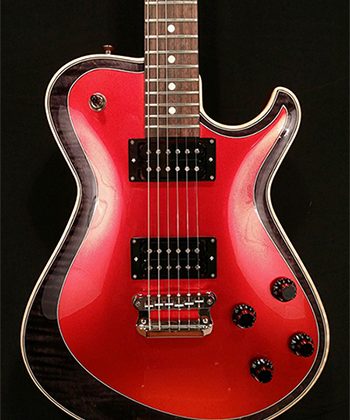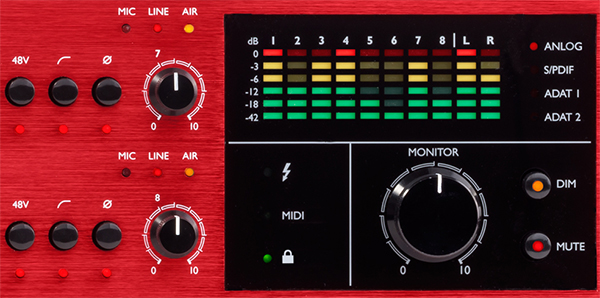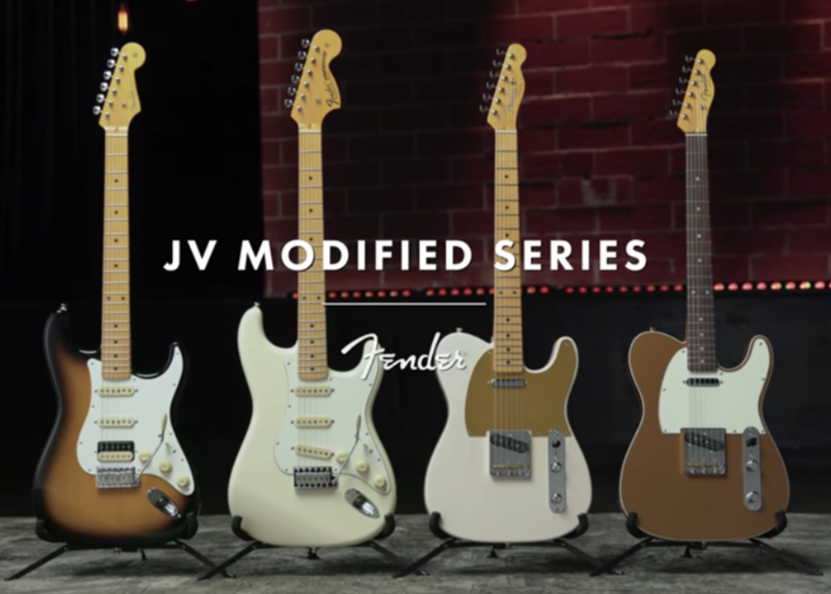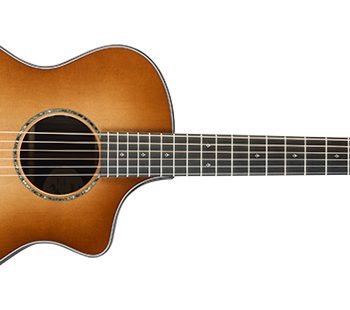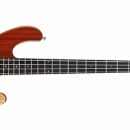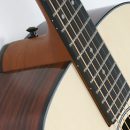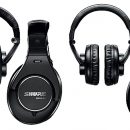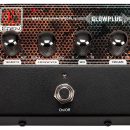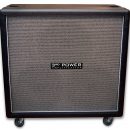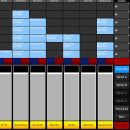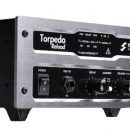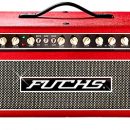 For decades, there were two behemoths in solid body American guitar manufacturing: Gibson and Fender, respectively. In the late ‘70s and throughout the ‘80s, shred guitar companies came and went by the dozens, many of which ironically were swallowed up by Gibson and Fender. The guitar community was ripe for a company that was fresh and innovative, yet borrowed from and improved upon traditional designs. One of the most notable and, perhaps, the most successful company to do this was Paul Reed Smith guitars. Making their mark with familiar set neck, mahogany body, and maple top designs, they took a traditional mainstay, made it better, and (importantly) created designs that were uniquely their own.
For decades, there were two behemoths in solid body American guitar manufacturing: Gibson and Fender, respectively. In the late ‘70s and throughout the ‘80s, shred guitar companies came and went by the dozens, many of which ironically were swallowed up by Gibson and Fender. The guitar community was ripe for a company that was fresh and innovative, yet borrowed from and improved upon traditional designs. One of the most notable and, perhaps, the most successful company to do this was Paul Reed Smith guitars. Making their mark with familiar set neck, mahogany body, and maple top designs, they took a traditional mainstay, made it better, and (importantly) created designs that were uniquely their own.
It takes a tremendous amount of talent and vision to create iconic instruments, with key people in the right positions. One such man was Joseph Knaggs. Knaggs took his two decades tenure at PRS, in which he was responsible for the Private Stock line as well as all of R&D and product development, and finally split off to introduce his own brand. Since 2009, in conjunction with co-owner Peter Wolf, Knaggs Guitars has been making quite a name for themselves in the boutique, hand made, American master built guitar market.
We got our mittens on a Knaggs Kenai T3 Double Purf in nitro cellulose-finished Onyx/Cherri Ice for review. [Editor's Note: Only Bruce can wear mittens and play guitar, but he's a trained professional.] MusicPlayers.com does not award points for hype, but if we did, this guitar would have justified that praise a hundred times over. “Awesome” barely covers it.
Features
Our test guitar came well packaged and inside a premium quality case, which set the tone for the rest of this review. Knaggs prides themselves on making superb, quality instruments with the player’s concerns in mind. The case has the company name and logo, and also features beautiful, black velour-like material inside, as well as leather-like bumpers on the outside.
Opening the case, the unmistakable smell hit us of curing nitrocellulose lacquer (us nitro fans would like to bottle this scent and use it in the car, shower, laundry detergent, etc.). The stylish, double purfling design with the aesthetic break between black onyx and cherry ice was boldly stated and easily the first feature that met our eyes. The tier 3 curly maple top had plenty of character and movement to it, and is easily worthy of being called a premium top even though this is the most economical model in its class. A small amount of the top (measured in millimeters) was left unpainted yet finished around the edge of the guitar, adding to the sleek, elegant look. Knaggs’s proprietary top wrapped tailpiece/bridge in nickel is another innovative feature that jumped out.
Black Hardware rounds out the face of the instrument, including a black pickup selector switch, black top hat knobs (familiar two volume, two tone combination) and black Seymour Duncan SH-1 59 humbucking pickups.
The single cut, set neck design was familiar as well, with a 24 ¾” scale length and a recessed heel joint. The weight of the guitar came in at a surprisingly light seven pounds—our backs will love this feature the most. The one-piece, finished, mahogany neck is cut to Knaggs’s “59” profile.

The headstock was an ebony veneer with a single light stripe, giving the instrument character and individuality. The (older) Knaggs open-back tuners are a thing of the past, and the Kenai sported modern Gotoh tuners, three to a side. A hand cut bone nut helps keep the guitar well intonated, in tune, and ping free. A gorgeous piece of East Indian rosewood with medium frets topped the neck.
The guitar shipped set up with .010-.046 gauge strings, typical of this scale length. We appreciated the included Dunlop locking strap buttons, which rounded out the package.
As a testament to quality, we couldn’t find a single tooling mark, smudge, stain, blemish, bubble or anything whatsoever less than perfect on this instrument. We looked very hard to find something, anything at all that might be “off,” and came up with nothing to note. If we wanted a collectible instrument for the wall case, this would have been a prime specimen, but this is a guitar meant to be played.
Usability
The mahogany neck is cut to what Knaggs calls a “59” neck shape. The 1 11/16” to 2 ¼” dimension coupled with a 12” radius made for a fantastic compromise between having enough neck to feel like you’re digging into something and still maintaining effortless playability. The radius being on the flatter side of things allowed us to get our action nice and low as well. Those of you who want a chunky neck guitar will not be disappointed, yet it’s not so chunky that it would scare away the shred community, either. We can play this guitar for hours on end.
The frets are so uniform it’s scary. Cleary a tremendous amount of labor has been put into each fret end, seemingly carefully considered to play with maximum comfort. With guitars in the upper price range, so much comes down to feel. We love the feel of this instrument! At 7.0 pounds, we could comfortably play this guitar all night in lieu of our other set neck, dual-humbucker guitars and not feel like we are playing less of an instrument for it. The Gotoh tuners hold tuning well and have a nice, smooth, feel, as do the pots for the volume and tone knobs.
The pickup selector switch was located in a position impossible to hit by accident. The proprietary bridge/tailpiece was quite easy to adjust when we wanted to drop the action a slight amount, right where we like it (but it should be noted that the guitar arrived perfectly in tune and with a more-than-playable, reasonably low action).

The recessed heel joint and single cut away allowed effortless access to the upper register of our test guitar. The instrument was played so much over the month long testing period that it needed new strings. Once restrung, we noted that the nut was cut well enough to not have any binding at all on our replacement set. We have seen many other similarly priced, high end guitars fail miserably in this feature.
Sound
We first fired up our T3 Kenai in one of our modest home studios. We had a selection of amps, and went for both our Friedman BE100 and Mesa/Boogie Mark Five for this sound test. A Marshall Lead 4x10 cab was used. We weren’t kidding when we said this might have been our most extensive sound test to date. We compared it to a host of other guitars—no less than ten. We took out Les Pauls, PRS, Jacksons, and a few other shredders.
 We felt the Knaggs lacked the lower ended mud usually associated with set neck, maple on mahogany instruments. We found ourselves dialing back the top end a little, which we previously compensated for on our amps when played with some of our other similarly constructed instruments. Through the Mark Five, the Knaggs sounded big yet well focused, presumably a wise pairing with its Seymour Duncan SH-1 pickups. We compared it to other humbuckers, and found it to be a good middle of the road in tone, volume, and punch. The Knaggs gave us a good balance, which was always up front and present in its tonal placement. The IIC+ mode in the Mark Five begged for the Knaggs to be played heavy, and the tone was glorious. The Edge mode on the center channel of the Mesa gave us the perfect amount of to-the-edge bluesy breakup when paired with this guitar.
We felt the Knaggs lacked the lower ended mud usually associated with set neck, maple on mahogany instruments. We found ourselves dialing back the top end a little, which we previously compensated for on our amps when played with some of our other similarly constructed instruments. Through the Mark Five, the Knaggs sounded big yet well focused, presumably a wise pairing with its Seymour Duncan SH-1 pickups. We compared it to other humbuckers, and found it to be a good middle of the road in tone, volume, and punch. The Knaggs gave us a good balance, which was always up front and present in its tonal placement. The IIC+ mode in the Mark Five begged for the Knaggs to be played heavy, and the tone was glorious. The Edge mode on the center channel of the Mesa gave us the perfect amount of to-the-edge bluesy breakup when paired with this guitar.
On to the Friedman, our Kenai performed equally as well. With a Korg SD3000 delay in the loop, we obtained beautiful soundscapes as well as searing lead tones. The BE100’s clean channel was glassy and pristine with the Kenai. The Knaggs delivered a low-enough bottom end to the clean channel to give it a classic metal/hard rock sounding clean: focused, not too chimey, and awesome with just a splash of reverb.
In the BE channel, the Knaggs took advantage of the high gain on tap well. Some of our other test instruments, particularly those with higher output pickups, naturally pushed this channel a little harder. To be fair, it’s worth noting the Knaggs didn’t lack in high gain tones, and it cleaned up better with more useable tone as the volume knob was rolled back (something Friedman amps handle extraordinary well) than our guitars equipped with hotter humbuckers. We did choose to deduct a half star due to this, although so much of a sound section is subjective and dependent on intended use and the reviewer’s ears. If we wanted more of a Swiss Army knife, the Knaggs was a better choice than most instruments in our collection. But for high-gain tone, we had a few other guitars better suited to pushing our amp’s dirty channel.
We took the Kenai to a band rehearsal in order to get a feel for the guitar outside of our comfort zone. The reason being was we were really starting to feel the Kenai could become one of our number one guitars (no self respecting guitar hoarder has just one number one!). In order to be “the best,” it has to be a go-to instrument outside of our comfort zone. What better place than a random rehearsal? We had no way of telling what amp we’d have to play through, and we decided to leave our comfort zone instrument behind for the night.
We got into the rehearsal room and found a Marshall DSL100W mated to a Marshall 4x12 cab. We were accustomed to this combination and knew the tonal footprint well already. We mated the amp to our Korg SDD3000 delay and a DOD Looking Glass boost pedal for the extent of this sound test.
We only used the dirty channel of the Marshall. The guitar sounded well paired, and at rehearsal volume (which was a bit louder than private studio testing volume), it pushed the amp wonderfully. The tone choices made for this guitar/pickup combination make it an excellent choice for live use in any modern style, as well as recording. Once the amp was dialed in (Marshalls don’t ask for much), the guitar had a carefully selected yet good balance throughout the frequency spectrum. We couldn’t imagine having to add or subtract much in any kind of post production. What we were hearing, we thought sounded great. Given it was a sub-$1,000, workhorse amp, we couldn’t have asked for more. We found ourselves using the Looking Glass solely for more volume because we really enjoyed the tone the Knaggs delivered when played in a live band context.
Documentation and Product Support
Our Kenai came packaged with an Allen wrench (for the truss rod), a way-cool Knaggs sticker, strap lock buttons, a hand written build card signed by Joe Knaggs himself, and a warranty card, but no care/setup information. Surprisingly, the warranty period is a meager thirty days, easily rating the shortest warranty we’ve ever seen for a guitar. We have heard that Knaggs has addressed warranty issues long after the warranty period ended in the past, but still, it’s a bit lacking.
Knaggs has an extensive website detailing their product line as well as other info pertaining to the brand. They have been very reactive to emails and phone calls for info as well. The website even features a Spanish language tab. Knaggs hablan Español!
Price
The T3 Kenai Double Purf Cherry Ice/Onyx (MSRP $4,720) sells for approximately $3,738. You can certainly “pay more for less” from various manufacturers’ custom shops. Guitars of impeccable build quality, coupled with thirty-five years of proven experience, aren’t had on the cheap, and being the most economical model in this Knaggs guitar’s line, we feel it’s priced fairly and a good value.
Contact Information
Knaggs Guitars
www.knaggsguitars.com
Overall Rating - Product Summary
| Category | Value | Rating |
| Features | 20% | |
| Usability | 25% | |
| Sound | 25% | |
| Documentation & Support | 10% | |
| Price | 20% | |
|
|
||
| OVERALL RATING = 3.5 Stars
3.6 stars or better: Outstanding, WIHO Award
|
||

